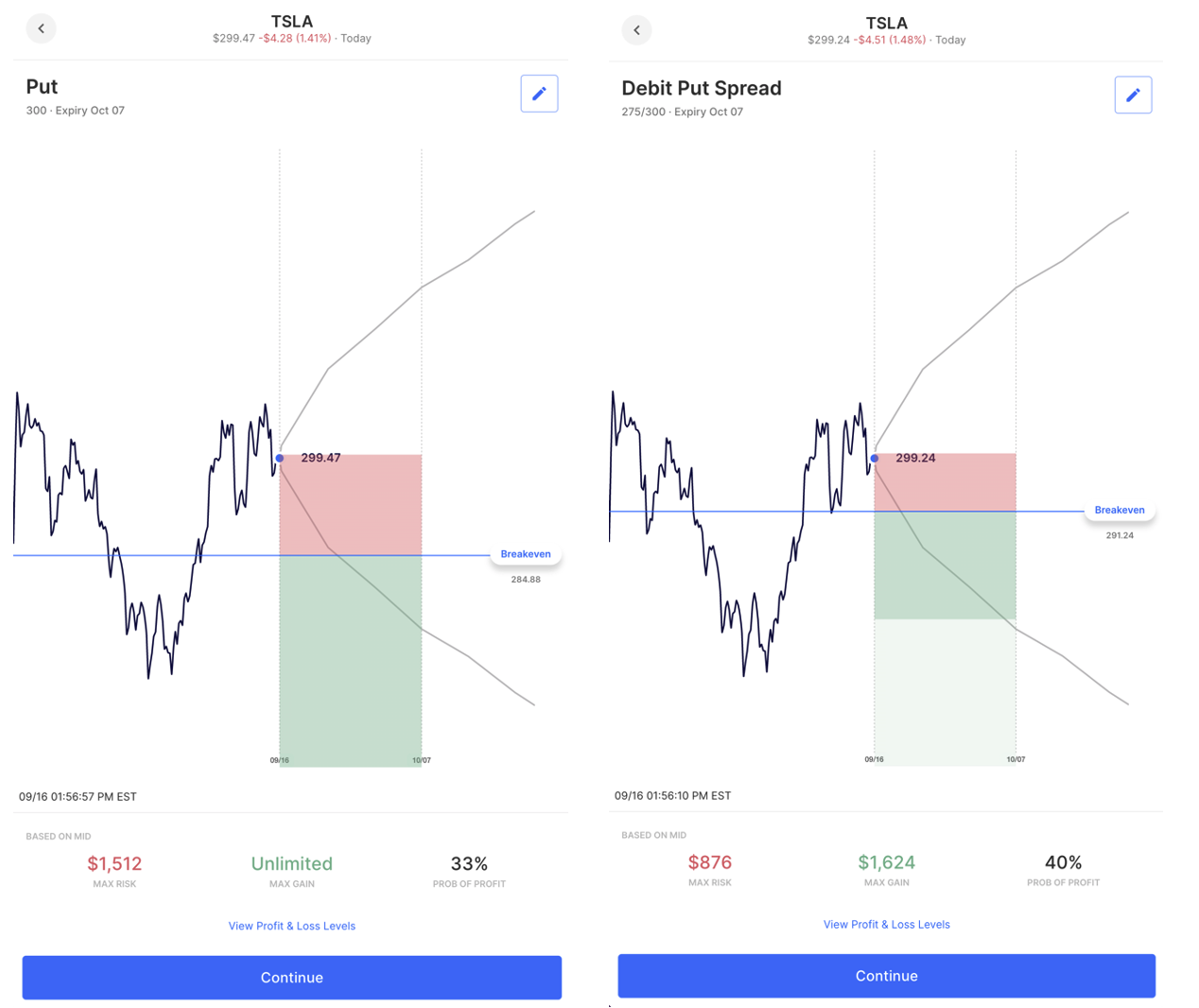Debit Put Spread
BULLISH DIRECTIONAL STRATEGY, ALSO KNOWN AS BEAR PUT SPREAD
A Debit (Bear) Put Spread is a two-leg options trade where we buy a Put option and simultaneously sell a lower strike Put. The strategy has defined risk and defined reward.
It is commonly used as an alternative to buying an outright Put, by investors who are bearish and willing to cap downside profit potential in return for reducing capital outlay (cost).
Watch the 1 minute overview:
Debit Put Spread (vs Long Put)
To look more closely at the Debit Put Spread and why it might be used as an alternative to simply buying a Put, let’s look at a hypothetical example using TSLA.
The Setup
Long Put
In this example, we start by taking an at-the-money 300 Put which, let’s assume we can buy for $15.12. Buying 1 Put option contract will therefore cost us around $1,512 which, will also be our maximum risk on the trade. We have the potential for unlimited gains if the stock moves below our breakeven level of 284.88 (strike – premium paid) at expiration.
Long Put to Debit Put Spread
Now, instead of simply buying the 300 Put, we look at simultaneously selling a lower strike Put to reduce our cost and maximum risk. Since we know that our profit potential is going to be capped at this lower strike level, we decide to use the expected move to help guide strike selection.
In this example, we see an expected move of approximately 8% (up or down) for our expiration date. We do not disagree with this options market consensus and therefore agree to cap our potential gains down around this level.
So, we decide to simultaneously buy the 300 Put (for $15.12) and sell the 275 Put (at $6.36) to setup a 300/275 Put Spread for a net Debit of $8.76 ($15.12 minus $ 6.36).
Visual Comparison

This visual comparison using the Options AI platform shows that by switching from long Put to Debit Put Spread our cost (or Max Risk) of 1 contract size is reduced from $1,512 to $876. This has the effect of raising our breakeven level from 284.88 to 291.24, thereby also increasing our probability of profit. Our trade-off being that with the Debit Put Spread, our zone of increasing potential gains (dark green) becomes capped at our lower strike price of 275.
Summary
In this Debit Put Spread example we have a defined Max Risk of $876. That’s the most that we can lose if the stock closes above our long 300 Put strike at expiration. We may see gains if the stock falls below the breakeven of 291.24 and we may see a Max Gain of $1,624 if the stock is below 275 at expiration.
In this example we have used an at-the-money option for our long Put. We may also set our long Put out-the-money to further reduce our cost (Max Risk). Of course, this will typically also lower our breakeven level and therefore lower our probability profit.
Check out our options trading courses to learn concepts like spreads, covered calls, iron condors and more.


